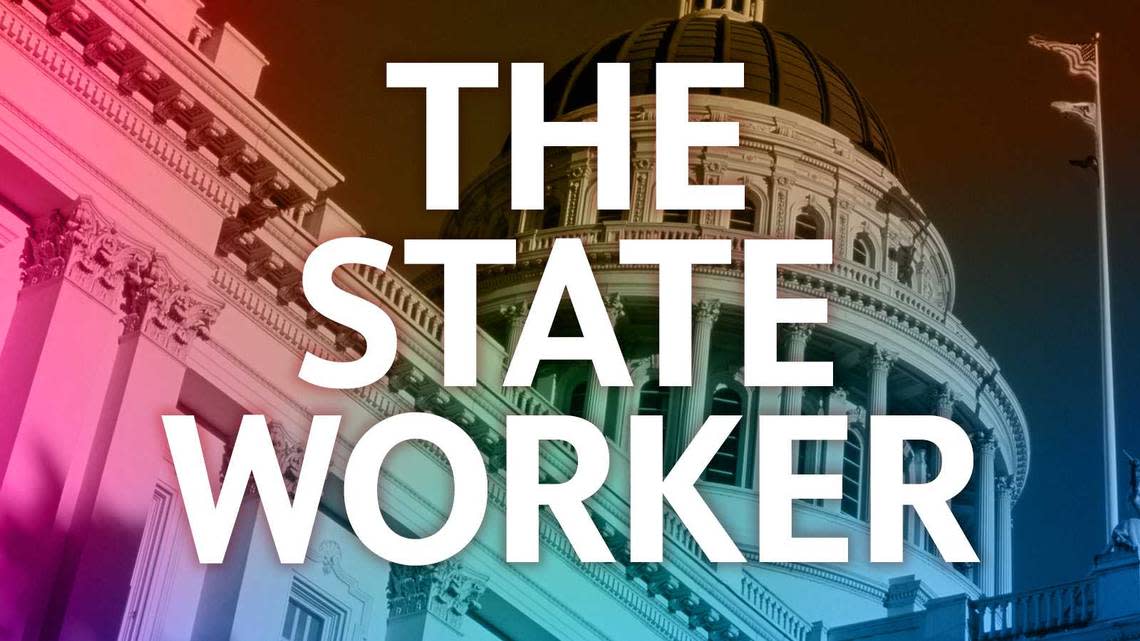California state scientists say they earn less than peer engineers. Could a new bill help?

California’s state scientists have fought a long battle for higher salaries.
These roughly 4,000 workers, represented by the California Association of Professional Scientists, have spent nearly three years bargaining over a contract that they say should include raises of up to 43% to address long-standing salary disparities. They rejected a February proposal that fell far short of those numbers.. Some members even called the offer “pitiful.”
Their work touches Californians’ lives every day in areas such as water safety, toxic cleanup and pest control.
Now, the scientists hope the state legislature will step in and help provide some answers.
A bill from Assemblywoman Tina McKinnor, D-Inglewood, would commission the UC Berkeley Labor Center to conduct an independent study of the salary structure within the scientists’ bargaining unit.
“These workers safeguard our wildlife and natural resources, ensure the safety of our food supply and protect our air and water from toxic pollution,” McKinnor said during a Public Employment and Retirement committee hearing in late April.
“But unfortunately, their salaries lag their counterparts doing similar work in state and federal government by up to 40% in some classifications.”
The Labor Center would be required to consult with both CAPS and the California Department of Human Resources and then present their findings to the Director of Finance by April 30 next year.
“As scientists, we rely on our data,” said Jacqueline Tkac, the union’s bargaining chair and an environmental scientist at the Central Coast Regional Water Control Board in San Luis Obispo.
“When you can’t agree on the data that’s being collected and presented at the table to make decisions,” Tkac said, “it’s really hard to agree on a lot.”
CalHR spokesperson Camille Travis declined to comment and said the department does not comment on ongoing negotiations, nor proposed legislation.
‘Pay inequities’ trace back to 2005
The union has pushed for double-digit wage increases for environmental scientists ever since a group of state engineers received a big pay boost in 2005. The scientists and the engineers perform similar work, sometimes handing off projects to one another, but the scientists didn’t receive the same raise.
“We attend the same meetings and provide the same value, expertise and knowledge as our counterparts,” said Mia Roberts, a senior environmental scientist specialist and CAPS board member, at the April committee hearing. “But apparently we are valued approximately 40% less.”
According to CalHR’s latest compensation survey from 2020, state environmental engineers out-earned environmental scientists by close to 30%.
The median monthly salary for state environmental engineers was just over $10,300 and surpassed federal environmental engineers by more than $900. Environmental scientists in state service, by contrast, had a median monthly salary of approximately $7,400 and trailed federally employed environmental scientists by 15%.
Spokesperson Ted Toppin with the Professional Engineers in California Government, which represents the state’s engineers, declined to comment.
The sticking point for most rank-and-file scientists is that their supervisors collected substantial pay increases in 2014 after a lengthy legal battle.
CAPS, which also represents supervisors, sued on behalf of scientists in supervisory roles who didn’t get the 2005 raise. Attorneys convinced a court that the engineers’ deal violated California’s “like pay for like work” policy.
Supervisors and managers ultimately took home raises worth 18% to 43% of their pay.
Scientists, on the other hand, gained nothing.
February’s tentative contract called for annual raises of 2% in July 2023 and July 2024 for the entire bargaining unit. A little more than 80% of the scientists qualified for salary adjustments that, coupled with the yearly wage increases, would’ve boosted their pay by 8% or more over the 2.5-year contract term.
CAPS members rejected the February deal by a margin of 59% to 41%.
Although state employee unions rarely reject tentative agreements, the state scientists also rebuffed a proposal from the Brown administration in 2014.
With a third-party analysis in hand, Tkac says she hopes the state and the union will come to the bargaining table with a better understanding of what equitable pay looks like.
“It would allow us, as a team with the state, to work together and find the data that we need to make informed decisions at the table.”
The Bee’s Cathie Anderson and Wes Venteicher contributed to this report.

